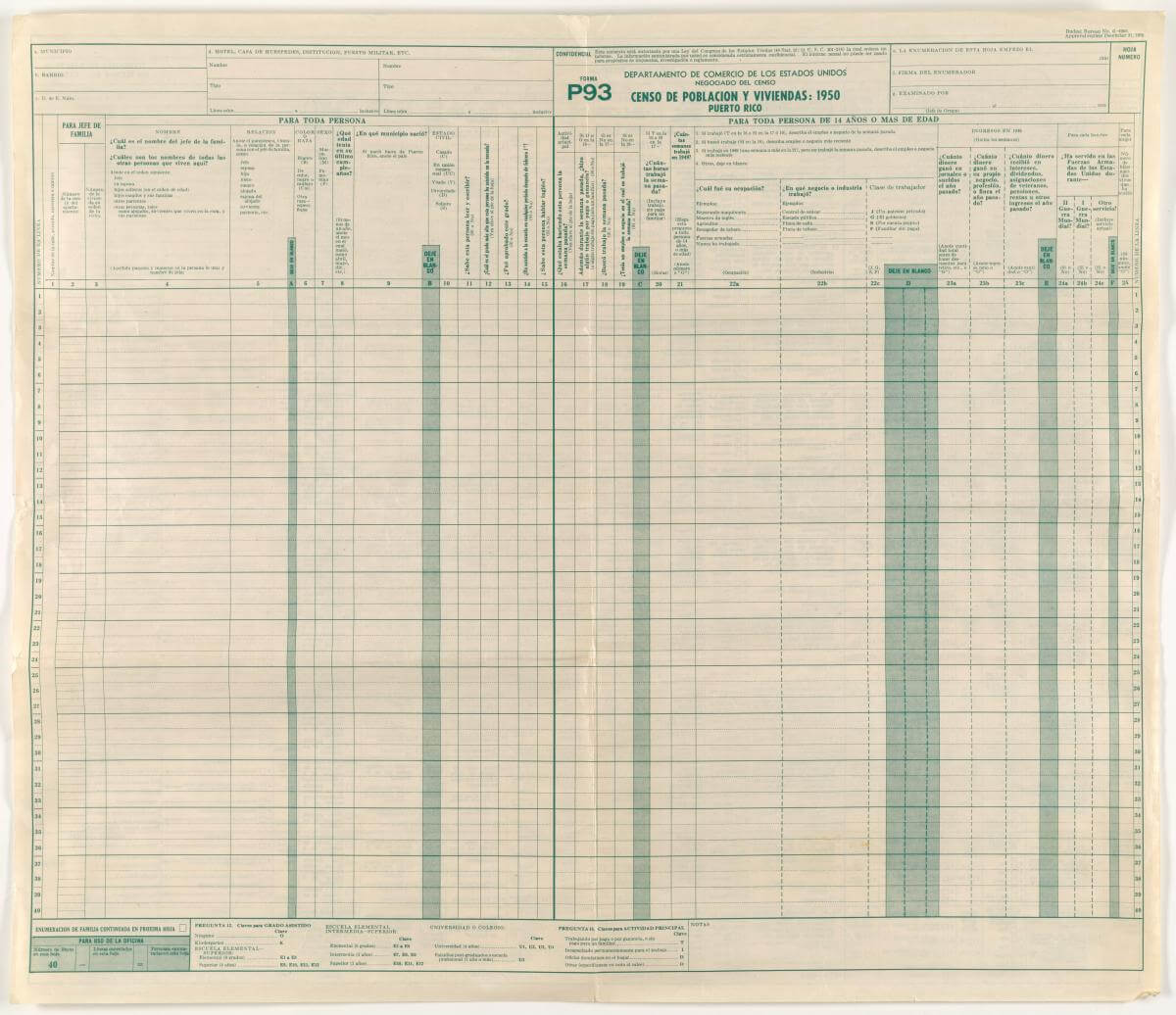On April 1, the 1950 Census will be live, online, for the first time! While the 1950 Census statistics have been available online, this release will show genealogists and family historians details about their family members who were alive in 1950. This may be the first time you or your loved one is featured in a census release! Beginning in 1790, the census has been taken every ten years and the results are released to the public 72 years after it is taken. What are the differences between the past censuses and the 1950 Census? Let’s take a closer look.
This is the first census to include the continental US, territories of Alaska and Hawaii, American Samoa, The Canal Zone, Guam, Puerto Rico, the Virgin Islands of the US, and some smaller island territories. Americans abroad were enumerated for the first time. Users may also search for individuals living in Indigenous and Native Community reservations, which used Form P8 ‘Indian Reservation Schedules.’ Provisions were also made to count members of the armed forces, crews of vessels, and employees of the US government living in foreign countries, along with any members of their families also abroad.
Another major change from previous censuses is the number of individuals who were recorded on the census. Over 150 million individuals were recorded in the 1950 Census—20 million more than the 1940 Census! This is where the term ‘Baby Boom’ comes from.
The 1950 Census pages feature 30 lines for individuals compared to 1940 which had 40 lines. This change allowed for extra space for the new sample questions. The sample questions for 1950 were asked to six people per page, whereas in 1940 only two individuals per page answered sample questions.
These six individuals who were asked the sample questions are the biggest difference between the 1940 and 1950 censuses. Only the six sample-line individuals were asked where they lived in the year prior. In 1940, everyone was asked where they lived in 1935. This was also true for the level of education as well as when they last attended school. In 1950, these six individuals were also asked about their wages and what type of work they had. While this information is helpful and adds context to the records, much of this sample information was not microfilmed, so it’s not included in the 1950 Census release. However, these statistics are available on Census.gov.
Another new feature is that the indexing for the 1950 Census is initially being done by artificial intelligence / optical character recognition (AI/ORC) to extract and interpret handwritten names and information from the digitized 1950 Census schedules. This is the step that makes the census name-searchable in databases like Ancestry.com and FamilySearch.org.
While this is revolutionary, this initial index will not be completely accurate. The National Archives is asking for volunteers and users to review and update the name index when an error is found. This approach will allow the 1950 Census to be indexed faster and more accurately. Since the 1950 Census may not be accurately indexed right away, you may watch our videos on how to use your ancestor’s enumeration district to find them.
There are multiple organizations who are offering access to the 1950 Census. The National Archives will have access, as well as resources to help navigate the census. Family Search is offering access to the census, as well as offering census update notifications. You may use Family Search from home for free by creating a free account. Ancestry also offers access to the census and can be accessed for free using the Ancestry Library edition within most libraries in Allegheny County.
Resources:
https://www.archives.gov/research/census/1950/blank-forms


